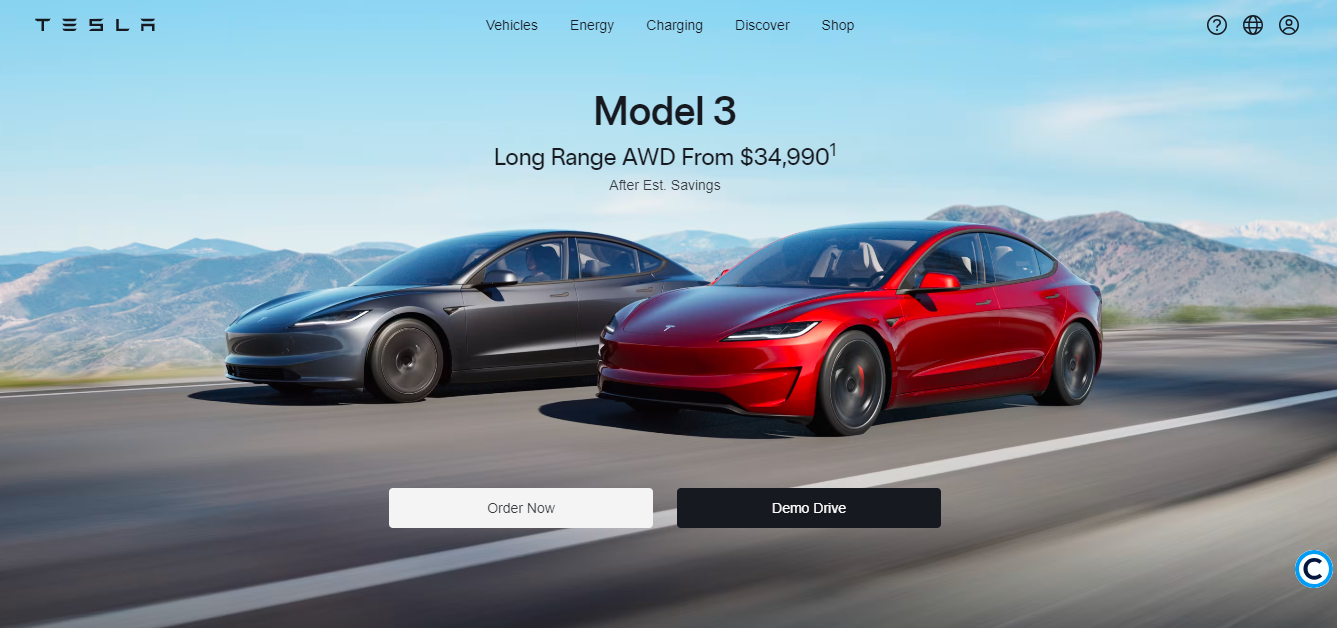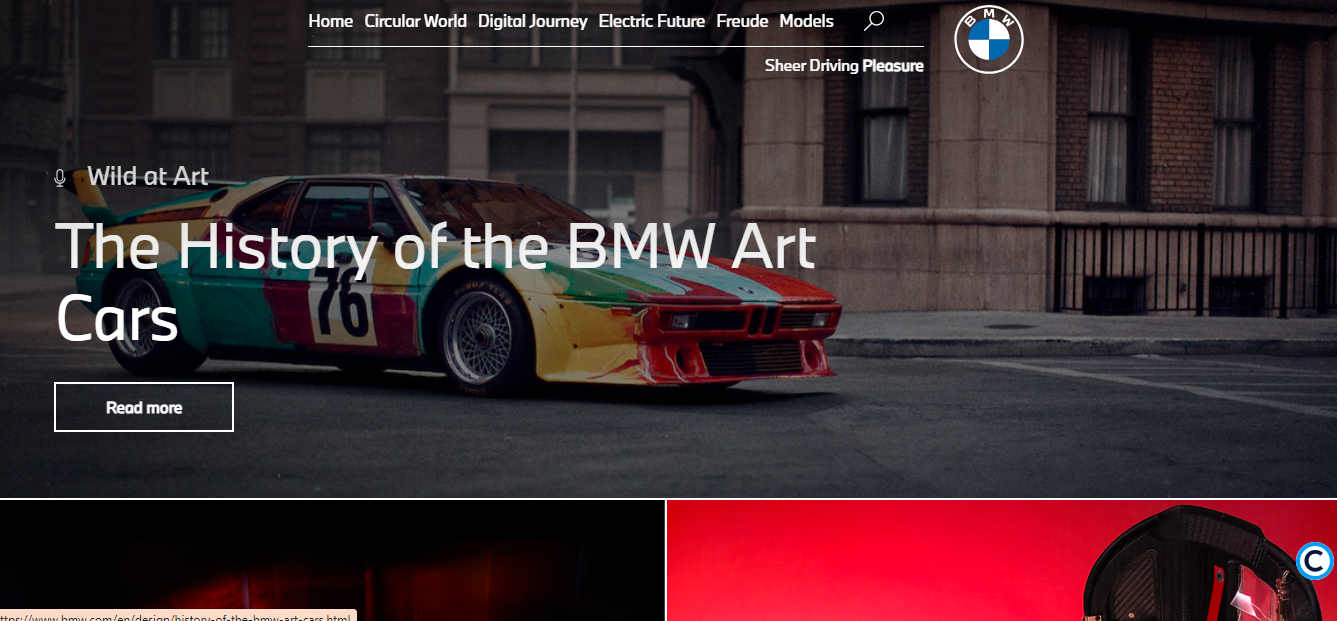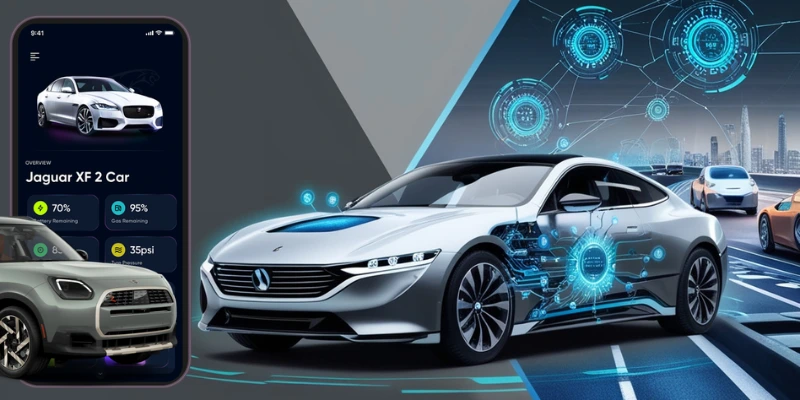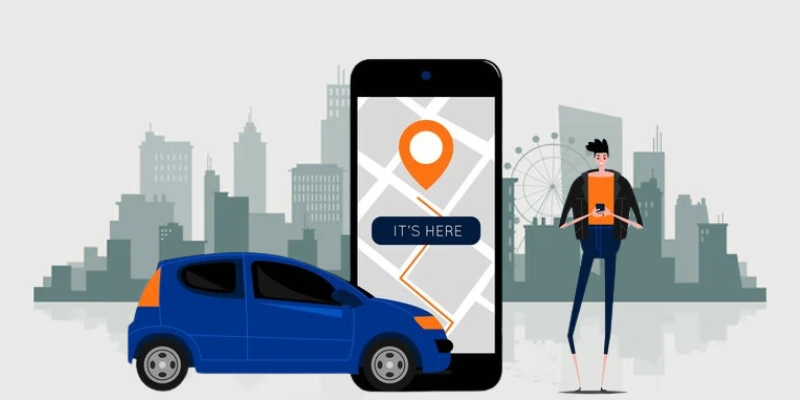To remain ahead in this highly competitive field and exceed the demands of their customers, automobile companies are now using the capabilities of digital solutions for automobile IoT (Internet of Things). It is an intricate equipment chain, including wide range sensors, cameras, GPS trackers, etc. They are connected to the cloud, providing live data and assisting with optimizing the manufacturing of cars. Additionally, the automobile IoT provides advanced vehicle management capabilities, enhanced efficiency in transportation, and an improved quality of driving, which is the future of autonomous cars.
Automotive IoT opens new possibilities for both buyers and automakers worldwide. From cars with connected devices to autonomous vehicles, the IoT Automotive App Development within the automotive business has left a significant impact on the industry.
The possibilities the IoT could provide to the auto industry are vast. It could transform how people travel and interact with their vehicles. Statista estimates the amount spent on automobile IoT could be $740 billion by 2025. Automotive IoT is a key element in this process, but many possibilities exist beyond the hyped autonomous cars.
We'll discuss these uses and benefits in our blog, but first, we will provide a brief overview of automotive IoT.
What Is Automotive IoT?
Automotive IoT integrates various devices (such as GPS and sensor trackers) and software in vehicles and throughout the automotive industry. IoT mobile app uses embedded systems to deliver real-time information that helps optimize the manufacturing process and even more efficiently administer transportation.
Utilizing IoT in the automotive industry allows automotive manufacturers to automatize their production processes, employing IoT predictive maintenance to decrease the repair time and improve profitability. In the same way, Automotive AI helps businesses like fleet management firms, car rentals, manufacturers, and suppliers leverage the power of predictive maintenance, allowing direct car-to-car interaction and driving aid powered by AI.
IoT is about creating a connection between hardware platforms. These platforms are typically tangible devices such as sensors and mechanical components of a car. Through this connectivity, automakers hope to increase their vehicles' functionality and include features such as real-time fuel monitoring. This is the primary function of the Internet of Things, but it has many advantages.
Also Read : Automotive Software Development Process Guide In USA 2024
Benefits Of IoT In The Automotive Industry
The Internet of Things allows for quicker, more efficient, and safer communication and data transfer between connected devices and computers that benefit industries across the globe, including the automotive industry. It is not an exception.
Predictive Maintenance
The innovative technology allows vehicles to analyze and collect in real-time, which helps to plan better maintenance and operational efficiency. Using sensors and connections technology, the automotive IoT will identify when a particular component in a vehicle could break down or become malfunctioning. This proactive approach removes the necessity for routine maintenance or waiting for something to break down suddenly.
Using predictive maintenance, vehicle owners can reduce time and cost by handling potential problems before they cause significant damage. For example, if a sensor finds abnormal wear on the brake pads, it could notify the driver that they may have them replaced quickly.
Smart Fleet Management
IoT in Automotive is the capacity to create sophisticated fleet management software. Companies can get real-time information about their fleet operations through connected vehicles and make intelligent decisions that maximize efficiency. By integrating IoT gadgets into cars, fleet managers can track the location of vehicles and fuel consumption, monitor driving behavior, and set up maintenance work. The data-driven method will result in better allocation of resources as well as reduced downtime and increased overall performance.
Smart fleet management can also provide proactive safety measures that increase. Connected sensors can spot dangerous driving behavior, like a harsh brake or abrupt acceleration. They can also provide immediate warnings to drivers or the fleet manager. By addressing these problems quickly through education or remedial steps, businesses can reduce incidents and protect the health of their employees.
Connected Vehicles
One of the biggest benefits of Automotive IoT is the CV2X (cellular car to anything), which connects smart transportation systems and vehicles. Through the seamless integration of IoT in the auto industry, cars can share important information such as their location, route, speed, and so on. This information can be used to control traffic flow in real-time and decrease the chance of accidents or collisions.
In-Vehicle Infotainment
Besides preventing accidents and keeping the vehicle, IoT-enabled information systems entertain passengers and drivers throughout the journey. They offer services like navigation, streaming music, hands-free phone calls, voice assistance, etc.
In-vehicle information devices only work on Wi-Fi or a mobile device with an internet connection, but automakers are working on making them operate autonomously in the near future. Indeed, Apple and Google have released CarPlay and Android Auto (their car-centric operating systems), which offer streaming in cars, allowing users to stream films, listen to songs, and play games when they travel.
Smart Infrastructure
The advantages of IoT for automotive manufacturing are not limited to better vehicles or reduced accidents. Infrastructure and roads are key components of the auto industry. With AI and IoT Automotive App Development Services in place, drivers will be able to access intelligent infrastructure. This will result in a superior driver experience, increased road security, easy parking management, and decreased collision risk.
IoT Use Cases In The Automotive Industry 2024
If we are talking about incorporating IoT in vehicles, it isn't just connected to the Internet. It's an entire notion. IoT improves many aspects of the auto industry, including data analytics, automation techniques, advanced connectivity, and even the dream of creating fully autonomous vehicles. This article will look at IoT applications for the automotive business.
Autonomous Vehicles
Autonomous cars have become an issue within the auto industry. Many automobile manufacturers are developing fully autonomous vehicles to speed around the streets. Although industry leaders such as BMW, Tesla, Waymo, and others have been utilizing AI and IoT patterns in the automobile sector to create self-driving vehicles, a completely driverless car is still an unrealized dream.
These business giants are developing semi-autonomous cars infused with IoT that aid drivers in parking, driving, braking, and changing lanes. These cars reduce the possibility of human error while driving safer.
Data Analytics
Data analytics within IoT to support the automotive industry involves analyzing and collecting vast amounts of information generated through interconnected vehicles and their surroundings. This data allows the service and manufacturer to decide on vehicles' performance, maintenance needs, and driver behavior.
Through data analytics, businesses can anticipate potential problems, improve the efficiency of their cars, and develop customized services tailored to every individual's preferences. Additionally, through predictive analytics, companies can create innovative products that satisfy their customers' desires, such as enhanced connectivity and personalized entertainment.
Usage-Based Insurance (UBI)
One of the major benefits of Automotive IoT is its ability to change the way insurance companies operate. UBI, also known as UBI, can change the game for both policyholders and insurers. The way that insurance companies have rated cars historically is determined by general factors like your age, driving records, or geographical location. But, thanks to Automotive IoT, insurers can collect real-time information about individual drivers' behavior and usage patterns. These data include mileage driven, average speed, brake patterns, and speed levels.
By analyzing this abundance of data using sophisticated algorithms and machine-learning models, insurance companies can design individual insurance policies that represent each driver's risk profile. People using their vehicles less often or with safe driving practices can be assured reduced premiums. At the same time, those involved in dangerous behavior might be penalized with more expensive rates or even penalties.
Supply Chain Optimization
IoT is a great way to boost the efficiency of the supply chain in automotive. Sensors embedded in components and parts monitor their condition and location, which helps manufacturers improve inventory management, reduce lead time, and assure prompt part delivery.
Real-time tracking of parts ensures that supply chains remain efficient, reducing storage costs and making production more efficient. Manufacturers can also quickly spot problems and fix them, thus avoiding production interruptions and increasing the efficiency of the supply chain.
Real-Time Vehicle Telematics
This is among the most significant automotive IoT uses and entails cloud-connected IoT boxes, also known as Telematics Control Units (TCUs), connected to Telematics devices. This technology offers real-time information regarding the driver's behavior, health, and vehicle performance. This resulting in increased efficiency, lower cost, and security. It allows for monitoring car movements, optimizing routes, traffic updates, and parking availability and behavior in the fleet. Owners of vehicles can monitor their cars remotely, using options like control of speed limits, access to operating details, and collision notification to third-party parties and emergency personnel.
Driver And Fleet Management
Another automotive IoT use is fleet management systems, which offer the fleet operator various advantages. IoT technology helps fleet owners control and monitor their cars' fleets by monitoring fuel consumption, maximizing routes, and scheduling maintenance for better efficiency and reduced expenses. Furthermore, the automobile IoT provides driver health and performance statistics, detects sleepiness, and issues idle alarms.
In addition, IoT sensors give signals and trigger alarms regarding coolant temperature or low battery level, engine maintenance, etc. By integrating IoT into vehicles, fleet managers can automate many processes, including trip planning, product delivery, and superior customer service, leading to a more pleasant customer experience.
Software Updates
IoT-integrated vehicles are upgraded with software that increases the effectiveness of locking mechanisms, enhances the entertainment experience in cars, strengthens cyber security, and enhances navigation and additional features. This is among the major uses of IoT in the auto sector, enhancing the safety of vehicles and their efficiency as well as the quality of driving.
Monitor The Driver's Condition
IoT within vehicles analyzes vehicle sensors to gather information about the motorist's physical and mental state. These data help to determine the driver's driving pattern and behavior. The data is then processed to offer additional support and safety to drivers. Furthermore, it can be used to help with insurance. Certain companies also incorporate IoT-enabled active seats for driver wellness that track breath and heart rate, warning drivers of possible sleepiness or fatigue and decreasing the chance of an accident.
The capabilities of IoT are a source of innovation for all aspects of automotive manufacturing, making it the primary engine for the coming generation of cars. IoT embedded in cars allows you to track and control vehicle performance using just one swipe on the Automotive App Development Solutions. These instances of IoT within the automotive industry allow for widespread adoption and are entering an exciting new era that will see all vehicles self-contained soon.
Environmental Sustainability
IoT sensors and data analytics could help reduce the carbon footprint of the auto sector. By monitoring emission levels as well as fuel efficiency and energy consumption, companies can design eco-friendly cars and decrease the carbon footprint of their vehicles. Monitoring emission levels and fuel efficiency allows companies to develop greener and more efficient vehicles. Emissions and energy usage reduction help the environment as well as the economy.
Infotainment
The automotive world of today is one where almost every car has an instrument cluster that houses the car's infotainment system. Connected cars and in-car entertainment are exciting aspects of IoT within the automotive sector. Infotainment systems, regardless of their vehicle specific, such as Kia's UVO or mobile-friendly ones like Samsung's Exynos Auto, offer a variety of functions, including voice-activated navigation, messaging, and even calls. The seamless integration of car audio systems and personal devices, as demonstrated by Apple's CarPlay, shows the seamless connectivity that links connected cars and infotainment devices.
Also read : Developing Mobile Apps for the Automotive Industry 2024
Top Automotive Industry Companies At The Forefront Of IoT Adoption
In the auto industry, accelerating toward a more connected and technologically advanced future, the most prominent manufacturers are at the forefront of adopting Internet of Things (IoT) technology. Here are some top IoT examples for automotive.
Tesla

Tesla Motors is a top electric vehicle maker that has fully exploited the benefits of IoT within its vehicles. Tesla's manufacturers incorporate IoT sensors into their cars, gathering data on driver behaviors, battery conditions, vehicle performance, etc. The data are sent to Tesla's servers, where IT experts analyze them for any problem and address it instantly before it becomes crucial.
Ford

Ford is a reputable automotive manufacturer that uses IoT advanced technologies to enhance the quality and experience of automobiles. Ford's factories are equipped with IoT sensors that monitor each step of the production and business process, including equipment, inventory, and production. Ford President and CEO has been utilizing IoT technologies to create autonomous vehicles for over a decade.
BMW

BMW uses IoT-powered solutions to enhance vehicle performance and the overall user experience. Additionally, BMW connects its ConnectedDrive services using IFTTT (If That Then This ) and IoT intelligent technology to enhance vehicle connectivity.
From supply chain management to predictive maintenance, operating efficiency, and inventory optimization, BMW leverages the power of IoT in all its facets. In other words, BMW has adopted every aspect of IoT when it comes to creating Connected cars that have transformed a person's driving experience in a Smart and Connected World.
Common Challenges Faced In Adopting IoT For Automotive
Although automotive IoT technology is growing in popularity yearly, car makers face some challenges when integrating IoT solutions.
-
-
Connectivity
-
The need for high-bandwidth connectivity is crucial to automobiles with automated or assisted driving capabilities. The slightest loss of connectivity could cause a breakdown in navigation and even a collision.
The Solution
The introduction of 5G has been the ideal answer to the connectivity problem. 5G and its upcoming successor, 6G, will offer fast, high-quality broadband connections even in remote and rural regions with intermittent network coverage.
-
-
Cybersecurity
-
As more vehicles become digital, including infotainment systems and software updates that are available over the air, connected vehicles are evolving into information hubs, but their security is not perfect. By gaining unauthorized access to sensitive information of vehicle owners, hackers can compromise driver privacy and the security of autonomous vehicles.
The Solution
The cybersecurity issue of connected vehicles should be tackled more thoroughly at the federal level by imposing stricter regulations to ensure sensitive data security. Car makers must be aware of the importance of privacy protection in design. Furthermore, periodic cyber-security audits and penetration testing and an effective security policy for data encryption can help attain the necessary level of security.
-
-
Uncertainty In The Technology
-
Automobile manufacturers depend on various communications protocols, standards, and operating systems to integrate IoT technology into their cars. Although technology flexibility may not cause a problem for drivers, it does lead to issues of compatibility for fleet management and for different car manufacturers.
The Solution
In the first place, automobile manufacturers should develop automobile IoT devices with open architectures that simplify their communications using various fleet management tools. Additionally, the automobile industry association and the government must consider establishing common standards for the auto IoT sector. It includes rules for standard communications protocols, data formats, and security protocols.
-
-
IoT Management In Extreme Circumstances
-
Poor connectivity usually interrupts the correct functioning of IoT-enabled cars, including commercial vehicles, when they are in harsh temperatures or isolated rural locations.
The Solution
To ensure the stability of embedded IoT systems and constant data flow even in extreme circumstances, we advise limiting the amount of data transmitted and buffering and utilizing an extremely robust client that does not require constant connections to the servers.
Also Read : Our take on Fleet Management Software USA 2024
Trends In IoT Automotive Industry 2024
Technology continues to develop and advance, and the cutting edge technologies for connected vehicles is promising. Below are a few trends and future developments worth keeping an eye on:
5G connectivity
Introducing 5G networks will significantly improve the connectivity of IoT-enabled vehicles. More reliable and faster internet connections will allow real-time data exchange, leading to more sophisticated options and features.
Over-the-Air (OTA) Updates
OTA updates, which allow companies to update vehicles' software remotely, will be more frequent. That means vehicles can be updated with new features and security patches without physically visiting the service center.
Cybersecurity
As connectivity increases, the threat of cyberattacks on vehicles becomes a worry. Manufacturers will have to take steps to strengthen cybersecurity to safeguard their vehicles and users' personal data.
Smart Cities Integration
Connected vehicles are expected to play a significant role in innovative city projects. They can connect to traffic signals, road signs, and other infrastructure to enhance circulation and ease traffic.
Car-Sharing And Ride-Sharing
Connected cars are set to help develop car-sharing and ride-sharing companies. These services can leverage IoT to manage and coordinate fleets effectively.
Future Of Automotive Iot In 2024 And Beyond
IoT within the auto sector has created new value for everyone involved and is expected to evolve as the years progress. It's transforming how we view the auto industry. It uses self-steering technology, intelligent parking, smart parking, artificial intelligence-driven acceleration, and braking on Tesla cars.
Not just Tesla but also the most recent models from BMW, Mercedes-Benz, and Audi have adopted IoT technologies and are setting an example in automotive IoT as a part of their futuristic action plans for fully autonomous cars.
The advancements that Automotive App Development Company and automobile firms in automobiles hold have the potential to transform the driving experience. While making it safer, more efficient, and more sustainable than previously.
Below are some possible changes in IoT that we may observe in 2024 or beyond:
-
-
Incorporating IoT into vehicles could pave the way for fully autonomous vehicle development.
-
IoT sensors gather data on the driver's preferred seat and music preference, as well as temperatures and more. This helps provide better customized driving experiences for those sitting in the driver's seat, and this personalized experience level will likely increase over the next few years.
-
Utilizing automotive IoT can also help optimize engine performance, reduce emissions, and enhance overall environmentally sustainable development. The future will provide better efficiency for managing transport.
-
As IoT becomes more commonplace in vehicles, there is a rising custom business requirement for better cybersecurity to safeguard sensitive information from cyber-attacks.
-
IoT within the automotive industry can be used in various ways and will significantly alter how we interact with automobiles. In the future, with IoT within cars, we are likely to see an ongoing advancement in analysis, greater efficiency, increased connectivity, and fully autonomous vehicles making a significant impact on the market over the next decade.
-
Conclusion
IoT has transformed the automobile market from improving safety features to personalized driving experiences. While companies continue to invent and innovate, IoT will play an ever-significant role in the next generation of transport. Automotive IoT is not only concerned with connectivity; it's an entire paradigm shift in how people interact with their cars. However, fully autonomous vehicles do not exist, suggesting that technologies need to become advanced. Additionally, ethical issues, data privacy, and security issues are to be dealt with to allow the complete use of IoT for automotive use.
In our final exploration into Automotive IoT, it's clear that the technology has enormous potential to shape the future of transport. With the constant advancement of connectivity and analytics of data and data analytics capabilities, we are likely to see more improvements to vehicle safety, fuel efficiency, and the overall experience for users.












Share this blog